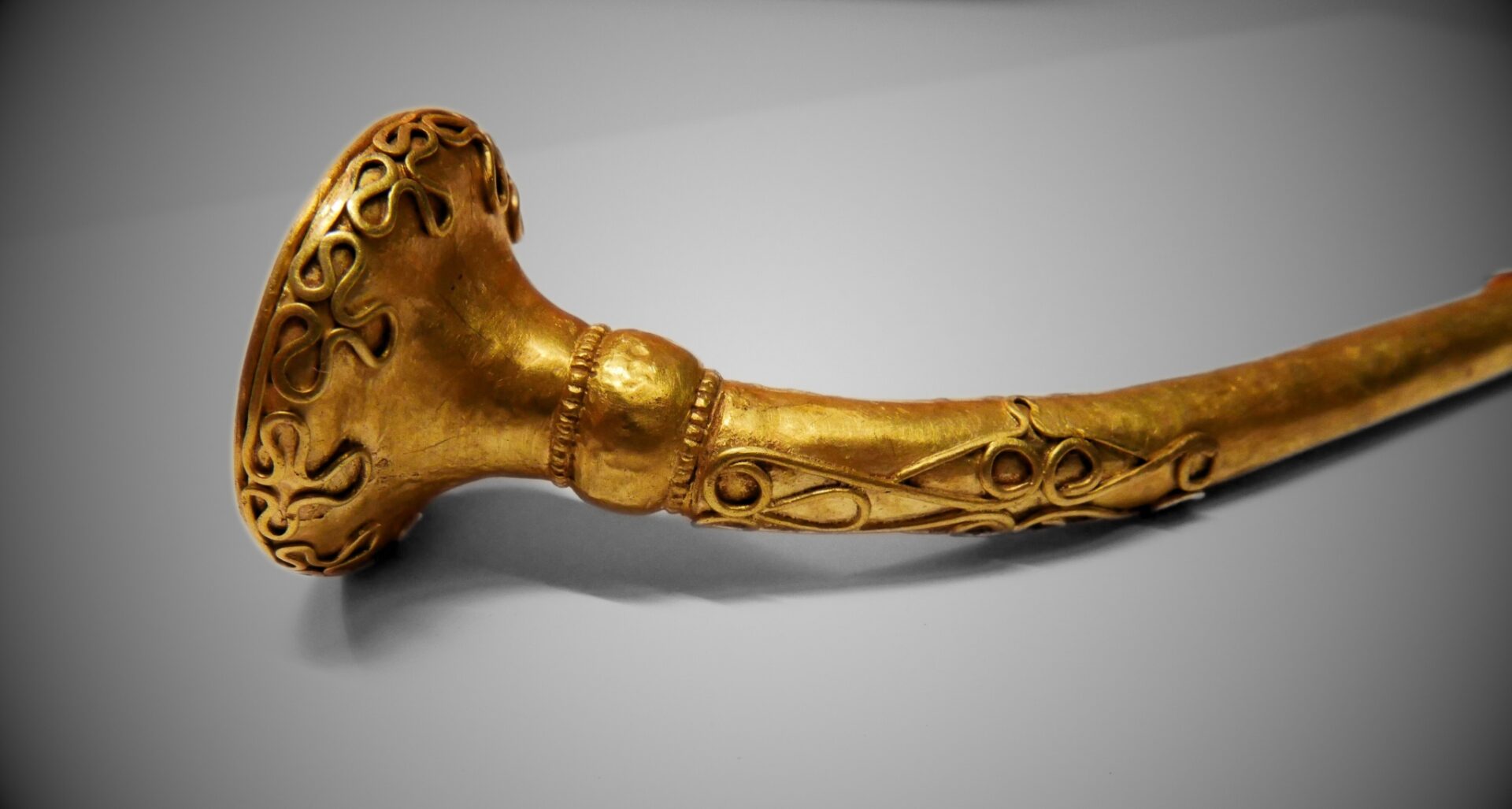
Prehistoric Power, Prestige and European Connections Revealed Through Analysis of Sussex’s First Iron Age Torc
Two fragments of an Iron Age gold torc discovered by a metal detectorist near Pulborough, West Sussex, in 2019, have undergone a process of scientific analysis by the British Museum which has confirmed the pieces to be fragments of a late prehistoric artefact of European significance dating back to Iron Age times.
The research, led by Dr Sophia Adams of the British Museum and published this week in Internet Archaeology, shows the fragments to be the first evidence for an Iron Age gold torc from Sussex, with the artefact now estimated to date back to between 2,300 and 2,400 years ago. It formed part of a spectacular object, signifying status and power in late prehistoric society and hinting at powerful connections between Sussex and the Continent.
After its discovery five years ago, and following formal reporting to the Portable Antiquities Scheme, the torc was subject to analysis and examination, confirming it qualified as Treasure under the stipulations of the Treasure Act 1996. The Sussex Archaeological Society subsequently launched a funding bid to acquire the artefact for the Society’s collection in 2023. After successfully securing funding via the Art Fund, the Arts Council England/V&A Purchase Grant Fund, The Headley Trust Museums Archaeological Acquisition Fund and via an online public appeal, the Society has been able to safeguard this important piece of Sussex heritage for future generations. The Society intends to place the gold torc on public display at its Barbican House Museum in Lewes from spring 2025.
Emma O’Connor, Museums Officer at The Sussex Archaeological Society, said: “The Iron Age gold torc fragment is an unique and beautiful object, and it is wonderful that the Sussex Archaeological Society has been able to acquire the torc, for it to be displayed and accessible within the county of its discovery. This is a significant and important addition to the Society’s Iron Age collections.”
“The Society is indebted to the generous support from grant bodies and the public alike. The museum is looking forward to welcoming visitors to see this fantastic treasure for themselves in the spring of 2025.”
The in-depth analysis and examination concluded that the “simplicity of the design belies the complexity of the construction”. While the examination showed the overall shape is typical for 4th to 3rd century BCE torcs found in France, Germany and Belgium, the fact that that the fragments were discovered in Sussex are particularly revealing.
Dr Adams and her team note in the summary of their findings: “The location of this find, towards the south coast of England along ancient routes of Atlantic and cross-channel contact and trade, is intriguing given the disparate influences seen in the design. This is not the first buffer terminal torc discovered in England; its discovery is preceded by both gold and copper-alloy versions, but it stands out for its individual style and decorative effect.”.
The full report ‘The Pulborough Gold Torc: a 4th to 3rd century BCE artefact of European significance’, by Adams, S., Craddock, P., Hook, D., La Niece, S., Meeks, N., O’Flynn, D. and Perucchetti, L. is published in free to read format by Internet Archaeology and can be found at: https://doi.org/10.11141/ia.67.16
We would like to once again express our enormous thanks to everyone who supported our fundraiser, helping us secure this significant historic artefact for Sussex, ensuring it remains accessible to all for generations to come.
